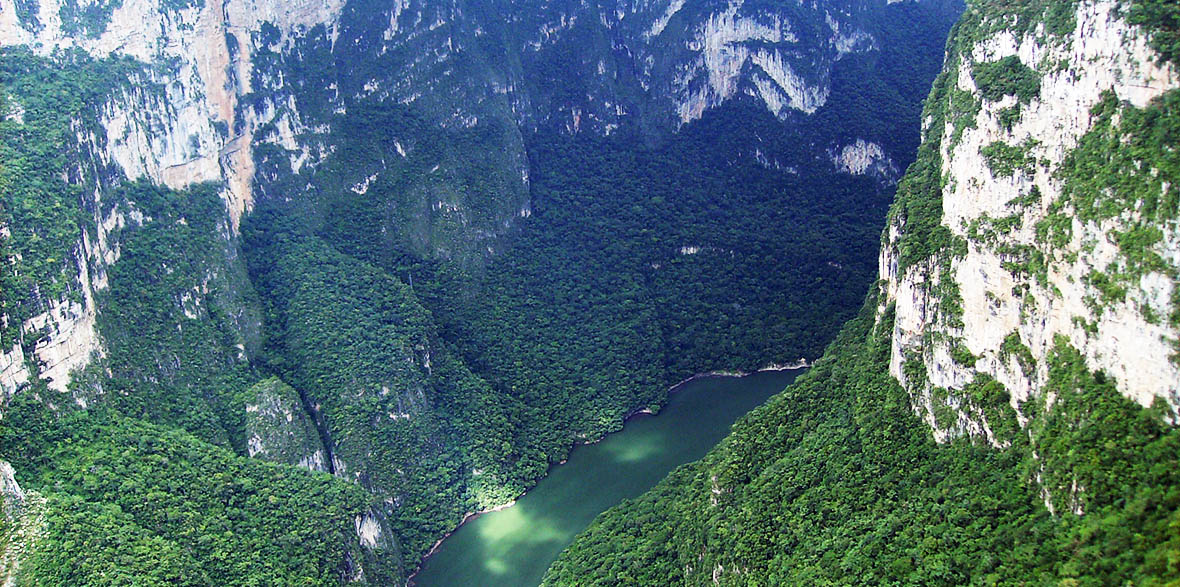The Senda Maya shuttle arrives at the hotel in the morning's eight o'clock hour. Too early for a full breakfast in San Cristóbal de las Casas, a late-rising city that dares you to find meals served before nine. Perhaps that's how the conversation winds its way to food en route. Our driver is a local -- tall, thin, friendly. He offers his staggered food schedule, which he thinks typical for locals. Coffee and sweet bread in the early morning. A large late-morning breakfast. A snack of fruit tides one over before an early afternoon lunch -- the day's big meal. An early evening snack precedes a small dinner with coffee around ten o'clock.
With all of this food talk, good we'd fueled up on breakfast sandwiches found in town. It's a scenic ride to the canyon, easing along a curvy mountain road as “colectivo” vans jockey for position. The white public transport shuttles are ubiquitous in Chiapas. Our tour van has greater comforts -- cushy seats, a large cooler with bottled water, foldable flat-screen TV. It doesn't get flipped down. It's not needed with the natural show rolling by outside -- rocky outcrops and mountain drop-offs slipping past as we cruise to the landing.
Boats disembark from the colonial town of Chiapas de Corzo. At the “embarcadero” dock, we strap on puffy orange preservers and join a small group aboard a fiberglass jet boat. Then we're off, throttling along river banks that are flush with vibrant greenery. Surrounded by a verdant national park, the narrow canyon is dotted by stands of oaks and evergreens. The scenery dramatically shifts and rocky terrain rises as we power deeper into the gorge.
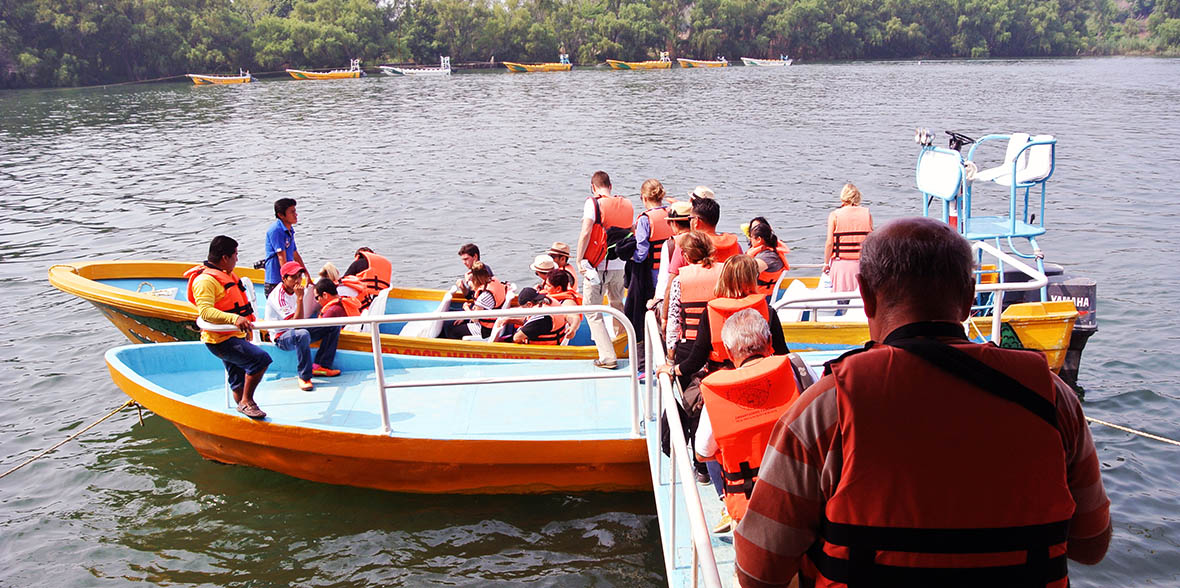
The boat slows. We pause under one of the canyon wall’s highest points, a sheer rock face going up a thousand meters. A tale of infamy is told. During conquest by the Spanish, the clifftops are said to have been mass suicide sites for indigenous peoples fleeing the prospect of slavery.
But cheerier highlights await as the boat chugs down the river. There's a stop at the "Cascada Árbol de Navidad," a moss-covered Christmas-Tree-like formation that shimmers under a waterfall. Pink is the dominant shade at the Cave of Colors, where a unique mineral mix creates brilliant colors on the canyon walls. The cave has a showcase image of the Virgin of Guadalupe, adorned by flowers and candles left by visitors. The tour also swings by a seahorse-shaped stalactite aptly named "Caballito de Mar."
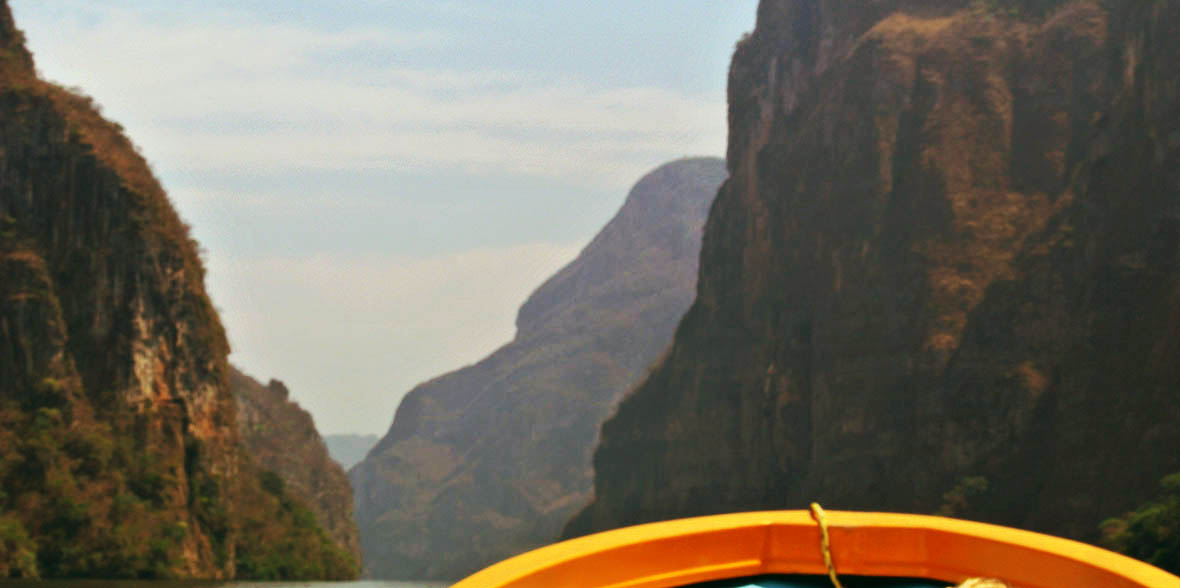
Something's been spotted. The boat eases close to shore. All camera phones spin to one side as passengers get ganders. It's a crocodile, lazing on the river's edge, more than two meters long by the rather unfriendly looks of it. Glimpses of a few more crocodiles are found throughout the tour. Hundreds of crocodiles call the Grijalva River home, sunning themselves on its banks, burrowing into cool muddy spots and clustered in small groups for snoozes in the sun.
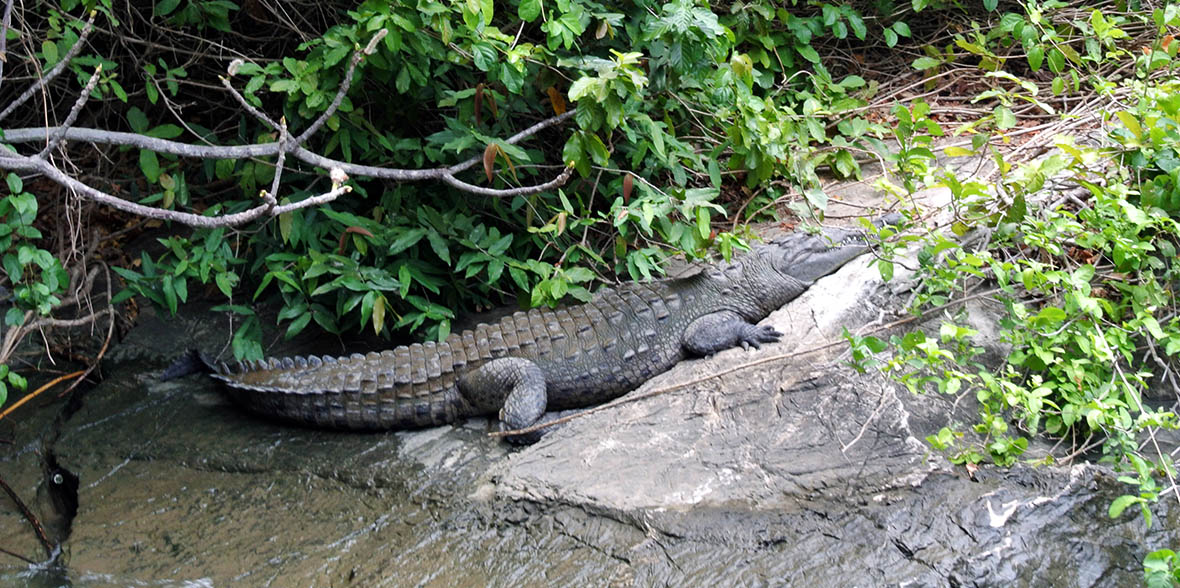
The crocs share their habitat with abundant birdlife, seen soaring overhead, floating in calm waters and tucked into trees on the shore. Herons perch on rocky stands. Egrets peck for drinks at the water's edge. Vultures ominously keep watch in the skies above.
The tour turns quite -- literally -- at the power-producing Chicoasén Dam, which tamed the Grijalva River's once rushing waters. In the placid basin before the structure, we're greeted by a boat bearing refreshments. The bobbing crew of vendors are most enthusiastic about pouring locally loved "micheladas," salt-rimmed beer mixed with spicy pepper sauce and lime juice. After drinks are leisurely enjoyed, our boat spins off for the return to the dock.
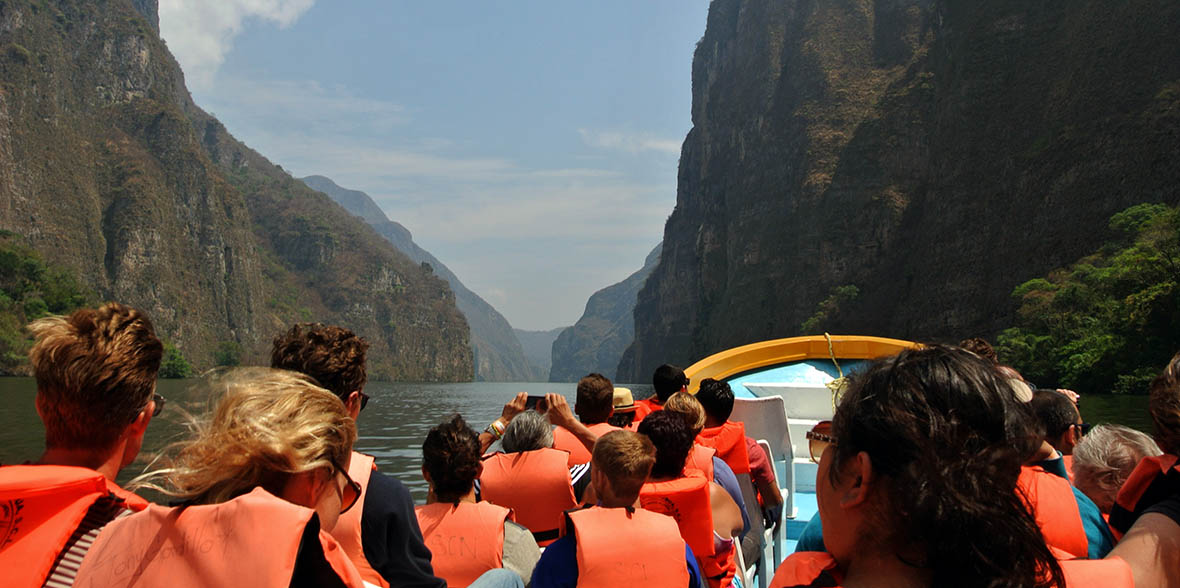
Back on land and back in the van. We're driving up for a lofty view of the canyon. Wristbands for the boat tour also allow entrance to a cliffside park with a series of dramatic lookout points. From these high vantages one can gaze out across the diverse landscape. The river below snakes in miniature, winding through rain forest and grasslands, as well as past lush expanses of pine and oak woodlands.
